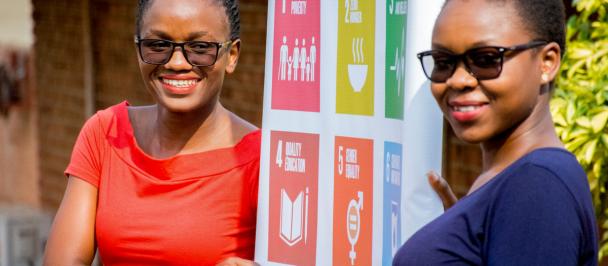Excellencies, Distinguished participants, Ladies and Gentlemen;
Achieving the Sustainable Development Goals (SDGs) will take between US$5 to $7 trillion, with an investment gap in developing countries of about $2.5 trillion. So it is my great pleasure to participate in this roundtable discussion on exploring innovative financing mechanisms to achieve the Sustainable Development Goals.
Achieving the SDGs requires a greater commitment across sectors and industries. It is clear that the scope and ambition of the 2030 Agenda go far beyond traditional public finance and international aid. It demands:
1) collective effort of governments, the private sector, philanthropy and civil society to make the SDGs a driving force of their actions, and
2) markets be fundamentally reshaped to be more inclusive, equitable and sustainable while generating profits, innovation and growth.
It is exciting to witness that global philanthropic contributions towards development is steadily growing, gaining visibility and creating much-needed change around the world. Over half of philanthropic institutions already seek to align their programmes with the SDGs. They have become active players in leveraging private capital and acting as ‘development’ venture capitalists. Globally, philanthropy has an estimated USD 1.5 trillion in assets and USD 150 billion in annual philanthropic expenditures.
For instance, the Ford Foundation committed up to $1 billion from its $12 billion endowment over next 10 years to impact investing, starting with low income housing in the US and financial services in the emerging markets. Rockefeller Foundation, another innovator in impact investing, through its ZeroGap portfolio currently experiments and leverages large scale private institutional investors to unlock private capital for impact, such as green energy bonds in Africa.
Both private sector and philanthropic investors increasingly demand social and environmental results. There is a growing volume of private assets being managed under environmental, social and governance (ESG) standards. An estimated 26 percent or $22.89 trillion of all investments were managed under ESG standards in 2015, according to the Global Sustainable Investment Alliance. Green bonds have grown from a zero baseline to over $220 billion in a decade.
Despite good news, challenges remain.
1. Sustainable business models and innovative finance schemes often fail to reach the scale needed to shift the world economy towards a more inclusive and sustainable pathway.
2. Rising debt burdens in Africa are becoming a cause for concern. We need to be careful that while we promote innovative financial solutions, we do not promote debt-based financing without consideration for the macroeconomic context, and
3. The roles played by philanthropy, the private sector, civil society and government have become blurred, along with interdependence and new means of collaboration.
Greater cooperation is therefore needed to build and sustain this progress by putting in place regulations and incentives, to ensure that financing flows towards investments that advance the SDGs and prove the “additionality” offered by responsible investment and innovative finance models.
UNDP, in partnership with governments, philanthropy, businesses, investors, communities, civil society and academia, seeks to amplify and accelerate this momentum for market change into transformation.
1. Through the SDG Philanthropy Platform – a global initiative connecting foundations and philanthropists to deepen collaboration, leverage resources and sustain impact – UNDP has pulled public-private capital for innovative projects to accelerate the achievement of the SDGs in Kenya, Ghana and Zambia. These local solutions are expected to positively impact the lives of 8.5 million people, mostly from remote areas, over a 5-year period.
2. UNDP is also working on a pipeline of social impact bonds that bear potential for replication and can be turned into larger outcome-based facilities. For instance, to bridge the funding gap in conservation and save Rhinos from extinction, we, together with our partners, are exploring how impact investment can be channeled in an outcome-based facility.
Our distinguished panel today will share experiences and discuss on how to scaling up innovative financing mechanisms for the SDGs.
Thank you.

 Locations
Locations



